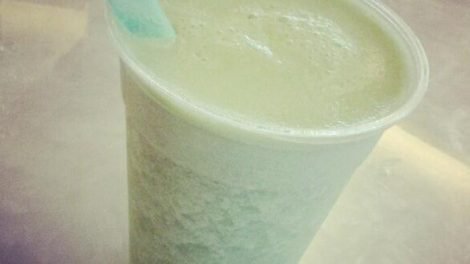The nutritional composition of ice creams and popsicles is very interesting, as they provide good quality proteins, calcium and vitamins. What are its nutritional values?

Ice creams become an excellent option to refresh ourselves, something wonderful especially when we are hot. In addition, their nutritional composition makes them a very interesting dessert or snack, with an interesting contribution of calcium, protein and vitamin B2. Although, of course, as long as its consumption is occasional and never excessive.
In summer, we know that one of the best and most interesting ideas to mitigate the heat and high temperatures is to have a good ice cream, although it is vital to take into account whether it is ice or cream when taking them, especially for those people. Who are on a weight loss diet?
As we indicated in the article in which we learned that ice creams are not fattening, it is enough to look at the ingredients in popsicles and ice creams to discover that, although they are similar, they are different foods.
Nutritional composition of ice creams and popsicles
It is evident that the nutritional contribution that we obtain from ice creams, popsicles or sorbets, are different since the ingredients used to make them are equally different. What makes its content of essential nutrients, fat and calories even vary greatly.
- Energy: Many nutritionists classify ice creams and ice creams themselves as foods of moderate energy content, which means that 100 grams provide less than 300 kcal. While ice creams made with milk provide around 150 kcal. In this sense, water ice creams (popsicles) and sorbets stand out, with an energy contribution that ranges from 68 to 138 kcal.
- Proteins: Although it may certainly be surprising, did you know that the proteins that we find in milk and cream ice cream have a high biological value? This means that since they are ice creams made from powdered milk (which is usually skimmed), their content in good quality proteins increases, highlighting in turn the contribution of the amino acid lysine. If nuts are also added to ice cream, its protein content can increase dramatically.
- Carbohydrates: The main energy value that we find in both cream ice creams and milk ice creams is due especially to their sugar content, mainly lactose and added sugars such as sucrose or glucose syrup. However, its fat intake can play a positive role in this regard, since by delaying gastric emptying it makes this type of sugar not so quickly absorbed. This is the case, for example, with lactose, which is a simple sugar with slower absorption.
- Fats: Both cream ice cream and milk-based ice cream tend to have variable fat content, although it is higher in cream ice cream than in milk-based ice cream. Obviously, everything will depend on the ingredients that are added, which can double this fat content, as is the case with the chocolate coating or pieces of white chocolate. In any case, 100 grams of ice cream provides around 20% of the recommended daily amount of fat. However, ice creams and sorbets contain practically no fat.
- Cholesterol: The caloric content of cream and milk ice creams is higher, providing around 30 mg. of cholesterol per 100 grams of product. As we can see, it is a somewhat high cholesterol content, although it only represents 10% of the maximum recommended intake of cholesterol (300 mg / day).
- Vitamins: The vitamin content provided by cream or milk ice creams is not so interesting. For example, they mainly contribute vitamin B2.
- Minerals: The presence of calcium is particularly noteworthy, especially in dairy-based ice creams and creams. In fact, 100 grams of dairy-based ice cream provides about 148 mg. Its contribution in magnesium is also interesting.
The main differences between ice cream, popsicles and sorbets
Ice creams are based on milk (which are considered dairy) and eggs, so they are very rich in nutrients and provide a greater number of both fats and proteins.
This differs from popsicles and sorbets, which are made with water to which sugar and fruit juices are usually added, being somewhat poorer in nutrients.
For all these reasons, the nutritional composition of cream or milk (dairy) ice creams and ice lilies tend to be quite different. So not only does its contribution in proteins, vitamins or minerals vary, but also in fats (and therefore in calories).
Beware of industrial ice creams. Much better the homemade and artisan
It is also necessary to differentiate between industrial and artisan ice creams and ice creams, since industrial ones usually contain modified ingredients and food additives.
On the contrary, artisan products tend to be, as you can imagine, much more natural, which is why they tend to be much easier to digest, although – yes – they are not as well preserved as industrial one.































